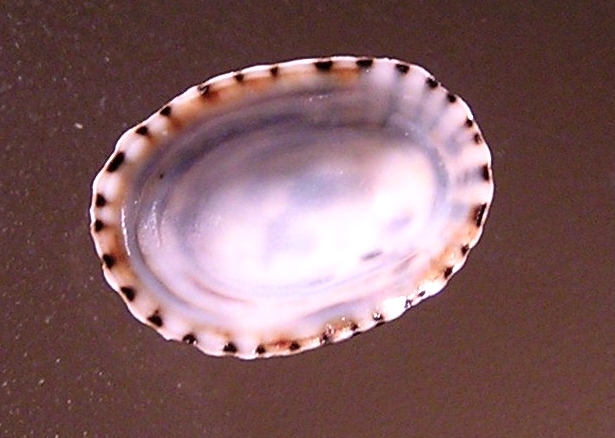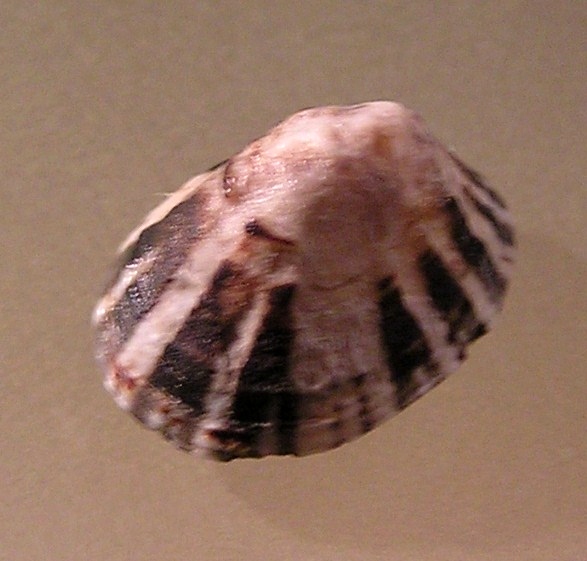|
Notoacmea Scopulina
''Notoacmea scopulina'' is a species of sea snail or true limpet, a marine gastropod mollusc Mollusca is the second-largest phylum of invertebrate animals after the Arthropoda, the members of which are known as molluscs or mollusks (). Around 85,000 extant species of molluscs are recognized. The number of fossil species is esti ... in the family Lottiidae, one of the families of true limpets. References * Powell A. W. B., ''New Zealand Mollusca'', William Collins Publishers Ltd, Auckland, New Zealand 1979 Lottiidae Gastropods of New Zealand Gastropods described in 1926 {{Lottiidae-stub ... [...More Info...] [...Related Items...] OR: [Wikipedia] [Google] [Baidu] |
Gastropod Shell
The gastropod shell is part of the body of a Gastropoda, gastropod or snail, a kind of mollusc. The shell is an exoskeleton, which protects from predators, mechanical damage, and dehydration, but also serves for muscle attachment and calcium storage. Some gastropods appear shell-less (slugs) but may have a remnant within the mantle, or in some cases the shell is reduced such that the body cannot be retracted within it (semi-slug). Some snails also possess an operculum that seals the opening of the shell, known as the Aperture (mollusc), aperture, which provides further protection. The study of mollusc shells is known as conchology. The biological study of gastropods, and other molluscs in general, is malacology. Shell morphology terms vary by species group. Shell layers The gastropod shell has three major layers secreted by the Mantle (mollusc), mantle. The calcareous central layer, tracum, is typically made of calcium carbonate precipitated into an organic matrix known as c ... [...More Info...] [...Related Items...] OR: [Wikipedia] [Google] [Baidu] |
Limpet
Limpets are a group of aquatic snails that exhibit a conical shell shape (patelliform) and a strong, muscular foot. Limpets are members of the class Gastropoda, but are polyphyletic, meaning the various groups called "limpets" descended independently from different ancestral gastropods. This general category of conical shell is known as "patelliform" (dish-shaped). All members of the large and ancient marine clade Patellogastropoda are limpets. Within that clade, the members of the Patellidae family in particular are often referred to as "true limpets". Other groups, not in the same family, are also called limpets of one type or another, due to the similarity of their shells' shape. Examples include the Fissurellidae ("keyhole limpet") family, which is part of the Vetigastropoda clade (many other members of the Vetigastropoda do not have the morphology of limpets) and the Siphonariidae ("false limpets"), which use a siphon to pump water over their gills. Behaviour and ecolo ... [...More Info...] [...Related Items...] OR: [Wikipedia] [Google] [Baidu] |
HarperCollins
HarperCollins Publishers LLC is one of the Big Five English-language publishing companies, alongside Penguin Random House, Simon & Schuster, Hachette, and Macmillan. The company is headquartered in New York City and is a subsidiary of News Corp. The name is a combination of several publishing firm names: Harper & Row, an American publishing company acquired in 1987—whose own name was the result of an earlier merger of Harper & Brothers (founded in 1817) and Row, Peterson & Company—together with Scottish publishing company William Collins, Sons (founded in 1819), acquired in 1989. The worldwide CEO of HarperCollins is Brian Murray. HarperCollins has publishing groups in the United States, Canada, the United Kingdom, Australia, New Zealand, Brazil, India, and China. The company publishes many different imprints, both former independent publishing houses and new imprints. History Collins Harper Mergers and acquisitions Collins was bought by Rupert Murdoch's News Corpora ... [...More Info...] [...Related Items...] OR: [Wikipedia] [Google] [Baidu] |
Arthur William Baden Powell
Arthur William Baden Powell (4 April 1901 – 1 July 1987) was a New Zealand malacologist, naturalist and palaeontologist, a major influence in the study and classification of New Zealand molluscs through much of the 20th century. He was known to his friends and family by his third name, "Baden". Biography Early life The name Baden had been a given name in a Powell family since 1731, when Susannah Powell née Thistlethwayte (1696–1762) gave to her child (1731–1792) the maiden name of her mother, Susannah Baden (1663–1692). The name Baden, particularly when associated with the surname Powell, became famous in 1900–1901, the year Arthur William Baden Powell was born, because of the siege of Mafeking, the most famous British action in the Second Boer War, which turned the British commander of the besieged, Robert Baden-Powell, into a national hero. Throughout the British Empire, babies were named after him. No family connection has yet been established between Arthur W ... [...More Info...] [...Related Items...] OR: [Wikipedia] [Google] [Baidu] |
Notoacmea Scopulina 001
''Notoacmea'' is a southern genus of true limpets, marine gastropod molluscs in the subfamily Lottiinae of the family Lottiidae, the true limpets. MolluscaBase eds. (2021). MolluscaBase. Notoacmea Iredale, 1915. Accessed through: World Register of Marine Species at: http://www.marinespecies.org/aphia.php?p=taxdetails&id=456334 on 2021-10-03 Species According to the World Register of Marine Species (WoRMS), the following species with accepted names are species within the genus ''Notoacmaea'': * ''Notoacmea alta'' Oliver, 1926 * '' Notoacmea badia'' (Oliver, 1926) * ''Notoacmea biradiata'' (Reeve, 1855) * ''Notoacmea cellanoides'' Oliver, 1926 * † ''Notoacmea chattonensis'' Laws, 1932 * ''Notoacmea conoidea'' (Quoy & Gaimard, 1834) * ''Notoacmea corrodenda'' (May, 1920) * ''Notoacmea daedala'' (Suter, 1907) * ''Notoacmea elongata'' (Quoy & Gaimard, 1834) * ''Notoacmea flammea'' (Quoy & Gaimard, 1834) * ''Notoacmea mayi'' (May, 1923) * † ''Notoacmea nukumaruensis'' W. R. B ... [...More Info...] [...Related Items...] OR: [Wikipedia] [Google] [Baidu] |
Family (biology)
Family ( la, familia, plural ') is one of the eight major hierarchical taxonomic ranks in Linnaean taxonomy. It is classified between order and genus. A family may be divided into subfamilies, which are intermediate ranks between the ranks of family and genus. The official family names are Latin in origin; however, popular names are often used: for example, walnut trees and hickory trees belong to the family Juglandaceae, but that family is commonly referred to as the "walnut family". What belongs to a family—or if a described family should be recognized at all—are proposed and determined by practicing taxonomists. There are no hard rules for describing or recognizing a family, but in plants, they can be characterized on the basis of both vegetative and reproductive features of plant species. Taxonomists often take different positions about descriptions, and there may be no broad consensus across the scientific community for some time. The publishing of new data and opini ... [...More Info...] [...Related Items...] OR: [Wikipedia] [Google] [Baidu] |
Mollusc
Mollusca is the second-largest phylum of invertebrate animals after the Arthropoda, the members of which are known as molluscs or mollusks (). Around 85,000 extant species of molluscs are recognized. The number of fossil species is estimated between 60,000 and 100,000 additional species. The proportion of undescribed species is very high. Many taxa remain poorly studied. Molluscs are the largest marine phylum, comprising about 23% of all the named marine organisms. Numerous molluscs also live in freshwater and terrestrial habitats. They are highly diverse, not just in size and anatomical structure, but also in behaviour and habitat. The phylum is typically divided into 7 or 8 taxonomic classes, of which two are entirely extinct. Cephalopod molluscs, such as squid, cuttlefish, and octopuses, are among the most neurologically advanced of all invertebrates—and either the giant squid or the colossal squid is the largest known invertebrate species. The gastropods ... [...More Info...] [...Related Items...] OR: [Wikipedia] [Google] [Baidu] |
Gastropod
The gastropods (), commonly known as snails and slugs, belong to a large taxonomic class of invertebrates within the phylum Mollusca called Gastropoda (). This class comprises snails and slugs from saltwater, from freshwater, and from land. There are many thousands of species of sea snails and slugs, as well as freshwater snails, freshwater limpets, and land snails and slugs. The class Gastropoda contains a vast total of named species, second only to the insects in overall number. The fossil history of this class goes back to the Late Cambrian. , 721 families of gastropods are known, of which 245 are extinct and appear only in the fossil record, while 476 are currently extant with or without a fossil record. Gastropoda (previously known as univalves and sometimes spelled "Gasteropoda") are a major part of the phylum Mollusca, and are the most highly diversified class in the phylum, with 65,000 to 80,000 living snail and slug species. The anatomy, behavior, feeding, and re ... [...More Info...] [...Related Items...] OR: [Wikipedia] [Google] [Baidu] |
Marine (ocean)
The ocean (also the sea or the world ocean) is the body of salt water that covers approximately 70.8% of the surface of Earth and contains 97% of Earth's water. An ocean can also refer to any of the large bodies of water into which the world ocean is conventionally divided."Ocean." ''Merriam-Webster.com Dictionary'', Merriam-Webster, |
Sea Snail
Sea snail is a common name for slow-moving marine gastropod molluscs, usually with visible external shells, such as whelk or abalone. They share the taxonomic class Gastropoda with slugs, which are distinguished from snails primarily by the absence of a visible shell. Definition Determining whether some gastropods should be called sea snails is not always easy. Some species that live in brackish water (such as certain neritids) can be listed as either freshwater snails or marine snails, and some species that live at or just above the high tide level (for example species in the genus '' Truncatella'') are sometimes considered to be sea snails and sometimes listed as land snails. Anatomy Sea snails are a very large group of animals and a very diverse one. Most snails that live in salt water respire using a gill or gills; a few species, though, have a lung, are intertidal, and are active only at low tide when they can move around in the air. These air-breathing species includ ... [...More Info...] [...Related Items...] OR: [Wikipedia] [Google] [Baidu] |
Animal
Animals are multicellular, eukaryotic organisms in the Kingdom (biology), biological kingdom Animalia. With few exceptions, animals Heterotroph, consume organic material, Cellular respiration#Aerobic respiration, breathe oxygen, are Motility, able to move, can Sexual reproduction, reproduce sexually, and go through an ontogenetic stage in which their body consists of a hollow sphere of Cell (biology), cells, the blastula, during Embryogenesis, embryonic development. Over 1.5 million Extant taxon, living animal species have been Species description, described—of which around 1 million are Insecta, insects—but it has been estimated there are over 7 million animal species in total. Animals range in length from to . They have Ecology, complex interactions with each other and their environments, forming intricate food webs. The scientific study of animals is known as zoology. Most living animal species are in Bilateria, a clade whose members have a Symmetry in biology#Bilate ... [...More Info...] [...Related Items...] OR: [Wikipedia] [Google] [Baidu] |
Species
In biology, a species is the basic unit of classification and a taxonomic rank of an organism, as well as a unit of biodiversity. A species is often defined as the largest group of organisms in which any two individuals of the appropriate sexes or mating types can produce fertile offspring, typically by sexual reproduction. Other ways of defining species include their karyotype, DNA sequence, morphology, behaviour or ecological niche. In addition, paleontologists use the concept of the chronospecies since fossil reproduction cannot be examined. The most recent rigorous estimate for the total number of species of eukaryotes is between 8 and 8.7 million. However, only about 14% of these had been described by 2011. All species (except viruses) are given a two-part name, a "binomial". The first part of a binomial is the genus to which the species belongs. The second part is called the specific name or the specific epithet (in botanical nomenclature, also sometimes i ... [...More Info...] [...Related Items...] OR: [Wikipedia] [Google] [Baidu] |







.jpg)

